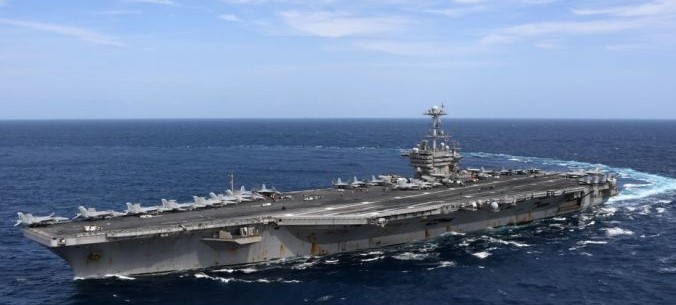
STRATEGIC ASSESSMENT. Russia had launched an object from its satellite, Kosmos 2543. Moscow claims that this projectile was an ‘inspector satellite,’ a module designed to monitor Russian satellites already in orbit to detect irregularities. While inspector satellites themselves are entirely legal, American and British officials expressed concern about Russian ulterior motives. In 2017, a Russian satellite released a high-speed projectile close to another of their space holdings. At the time, American officials claimed this was a weapons demonstration. The object released from Kosmos 2543 shares worrying similarities with that from the 2017 incident. To further compound American concerns, in February of this year, space watchers detected indications that the Russian satellite Kosmos 2542 seemed to be shadowing an American spacecraft, USA 245. All of this maneuvering prompts an important discussion about the potential for conflict in the unregulated regions of near-Earth orbit. Military and civilian dependency on satellites for global positioning systems, the internet, and radio, make threats to their well-being incredibly dangerous. Somewhat bafflingly, the most critical existing multilateral convention regarding weapons in space, the 1967 Outer Space Treaty, was drafted and passed over half a century ago. Despite the reluctance of American military officials and policymakers to sign on to the Russian and Chinese-sponsored ‘Prevention of an Arms Race in Outer Space’ (PAROS) treaty, multilateral action is necessary to prevent escalation in this delicate, unregulated, and rapidly developing field.
The 1967 Outer Space Treaty was instrumental in banning nuclear weapons in space and preventing military activities on ‘celestial bodies,’ such as the moon or other planets. Penned and ratified when global anxiety regarding atomic war was at an all-time high, this treaty’s focus was de-nuclearizing the ‘final frontier.’ Its authors never considered the treaty’s shortcomings concerning specific provisions for satellites and anti-satellite weapons because few at that time could have envisioned the development of the internet and the importance of outer space for communications and global positioning. However, some critical guiding principles from this document can serve to inform the development of a new, more comprehensive outer space arms treaty. Principally, the 1967 treaty held countries responsible for damage that they caused while exploring space and required space exploration to be guided by the ‘principles of cooperation and mutual assistance.’ These fundamental tenets are just as applicable now as they were in 1967. Humanity, collectively, will benefit from the continued exploration of space and the protection of communications satellites and that collective benefit cannot be put at risk for military advantages.
Through both the Obama and Trump administrations, U.S. policymakers have been reluctant to meet the terms of Russian and Chinese officials regarding PAROS. This reluctance is not without good reason. In its submitted form, PAROS fails to provide an adequate definition of what constitutes a weapon in outer space. The agreement, drafted in 2008, builds upon existing frameworks laid out by the 1967 Outer Space Treaty and would ban placing objects carrying weapons into orbit, installing arms on celestial bodies, or threatening to use force against items in outer space. Critically, however, this treaty does not address ground-based anti-satellite equipment, a category of weapons that both Russia and China have invested in developing. China, in particular, has demonstrated an impressive capability to target satellites with ground-based weaponry such as lasers. To ensure the security of military and civilian satellites, any multilateral treaty regulating 21st-century outer space weaponry must address ground-based weapons, not just those in orbit.
In its current iteration, PAROS serves to limit weaponry in outer space in a way that benefits Russian and Chinese interests and handicaps their adversaries. However, this does not mean that the international community cannot or should not revise the document to completely address and control the issue of arms used in outer space. Protecting the backbone of our globalized and connected world should be a paramount concern of governments worldwide and is essential for civilians’ well-being in every corner of the globe. For all its faults, our global communications infrastructure in outer space plays an integral part in keeping us all safe. By performing essential functions such as predicting and transmitting severe weather data, health records, global positioning services, or messages to friends and family, access to a demilitarized near-earth orbit benefits us all. Allowing the development and implementation of weapons that threaten this status quo would come at the detriment of all of our collective well-being (TSC).





